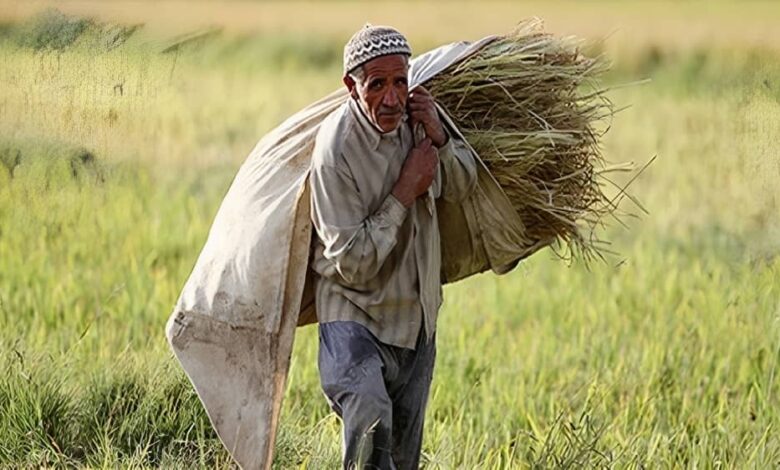Understanding The Iranian Regime’s Push to Seize Agricultural Lands

iran farmer agriculture
Written by
Mansoureh Galestan
In April 2023, news broke about the confiscation of 18 million hectares of agricultural land in Iran. This confiscation plan, which was met with strong public opposition, targeted not only large expanses of land but also smaller agricultural plots owned by farmers who worked their own fields. The regime seized any land lacking documentation endorsed by the ruling authorities, even if these lands had longstanding ownership records, bearing the signatures of generations of local residents who had cultivated them.
Now, a critical question has emerged: To whom do some of the seized agricultural lands belong? These lands have been rezoned for the construction of residential communities, but the true ownership remains unclear. The change in land use has raised several concerns.
The controversy intensified to the point where even a state-run newspaper expressed caution about the confiscation of agricultural lands, warning about the implications of the Housing Transformation Act.
The state-run Hamdeli newspaper wrote, “While the Housing Transformation Act is being pursued, many agricultural lands face potential changes in land use. Hojat Varmaziyari, a university professor and agricultural researcher, raised concerns about the Act, stating that the claim of adding 330,000 hectares to the area within the boundaries of villages and cities would impose a financial burden of around 3,400 trillion tomans on the economy. This goes against the principles outlined in Article 76 of the Constitution, as the parliament cannot pass a law that burdens the nation without a clearly defined funding source.”
Varmaziyari added, “Up until now, some land grabbers have encroached upon agricultural lands and natural resources outside the boundaries of urban areas and villages. The consequence of this law is that illegal constructions, which were previously at risk of being demolished, have now been granted legal status.”
#Iran News in Brief
In a report dated May 29, the state-run newspaper Sharq exposed some information about the potential confiscation of Iran’s lands and water resources by the ruling clerics and #IRGCterrorists. https://t.co/rc22s4ytfz pic.twitter.com/SHrxy1hTh3— NCRI-FAC (@iran_policy) June 2, 2023
He further noted: “This is an unprecedented and aggressive move in the country’s history, where 330,000 hectares of agricultural lands and natural resources have been transformed and incorporated into urban and rural areas within just five years. Furthermore, it’s essential to acknowledge that the formation of every inch of arable land takes hundreds of years.”
The agricultural expert emphasized that certain speculative views suggesting Iran has 18 million hectares of agricultural lands, making 330,000 hectares seem insignificant, are misleading. Iran possesses only 1.2 million hectares of prime agricultural land. In a comparative sense, it is crucial to evaluate how much of these valuable lands are at risk of destruction.
He concluded by highlighting that there are approximately 478,000 vacant rural houses. The question that remains is why this housing capacity isn’t being employed to accommodate the population’s housing needs.
Regime Supreme Leader Ali Khamenei leveraged Article 44 of the Constitution to seize various sectors of Iran’s economy, including industries, services, transportation, petroleum, petrochemicals, gas, and other wealth-producing segments for the benefit of his affiliated foundations and the Revolutionary Guards. At the time, it was hard to predict that the confiscation of Iran’s national wealth would happen so swiftly. The so-called “privatization process” started in the early 1990s and is currently in its final stages, now referred to as the “Production Plan.”
And now, Khamenei and his associates are shifting their focus toward confiscating Iran’s agricultural lands. They have initiated a dispute about the ownership of these lands by falsely claiming that the farmlands, even those owned by farmers who work their own fields, belong to the state, declaring them “national lands.”
Iran: Isfahan Uprising in Support of the Protesting Farmers #Iran #IranProtests https://t.co/jzxGhgjjGE
— NCRI-FAC (@iran_policy) November 19, 2021
The regime alleges that about half of these 18 million hectares of agricultural lands are facing ownership disputes, and they argue that the issue of ownership needs to be resolved between the government and the farmers.
These are lands owned by the people, individuals who neither own large estates nor even small properties, yet they hold ownership documents and land deeds with decades-old signatures, evidence of generations of their families working on these lands. Now, the regime is attempting to confiscate these lands.
Currently, the ruling clerics have targeted over 60% of these 18 million hectares, which are now the subject of disputes involving the farmers.
They have promised to determine the fate of these lands by the end of this year.
This endeavor, similar to the confiscation of major industries and services, is ultimately aimed at consolidating ownership under the leadership of Khamenei, his affiliated foundations, and the IRGC. The expected outcome is an extension of the ongoing revolutionary crisis, which currently has its epicenter in urban areas, into rural and agricultural regions. This crisis is anticipated to generate social tensions and upheaval in at least nine provinces.
Understanding The Iranian Regime’s Push to Seize Agricultural Lands

